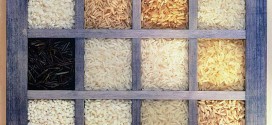Problem Soils and Management
Acidity, salinity, water logging and poor physical properties are the major problems that exist in the state.
1. Kuttanad arid soils
Very strong soils (with pH less than 3.0) that are seen in Kuttanad areas are kept submerged in water for major part of the year as they lie below sea level: So, this area faces problems of floods and water stagnation. Toxicities of iron, aluminium, manganese are observed and the availability of calcium, magnesium, potassium is low. The organic matter rich soils of Kuttanad faces drainage problem apart form acidity. Occurrence of heavy rainfall damages the bunds while flooding results in severe crop damage.
Management
Research on soil acidity and plant growth, water management studied has to be intensified and proper agro-techniques for this area have to be framed. Apart from this, as rice is the major crop that is taken up for cultivation, certain precautions certainly helps to increase the productivity. Rice season starts by September-October and ends by January-February. Seeds should be sown only after dewatering the area. The soil should not be allowed to dry up after the seeds are sown. Formation of deep cracks and hand pans can be eliminated by submerging the field.
2. Kole soils
Kole soils are also water-logged in nature like Kuttanad soils covering 11,000 ha in Trichur and Malappuram. The soils are shallow, acid saline due to intrusion of water, the characteristic feature that makes these soils to differ from Kuttanad acid soils. The soil is hard and brittle, poor in fertility.
Management
Intrusion of seawater is to be prevented and heavy doses of manures and fertilizers are to be applied. By proper soil and water management suitable cropping system is to be adopted.
3. Coastal sandy soils .
Poor fertility, high water table, improper drainage are some of the problems of sandy soils.
Management
By the addition of organic matter, we can improve the physical condition of the soil. Addition of clay is also eco-nomical. Moisture conservation measures should be adopted. If rice is grown, nitrogen fertilizer is added in split doses, normally 4-5 splits during crop-growth period.
4. Alkaline and calcareous soils
The soils of Chittoor area of Palaghat district shows high sodium hazards and they are marshy in nature, which makes the ploughing difficult.
Management
Application of red earth is recommended to improve the tilth. Varieties suitable to this tract should be used. Special adaptations like draining the soil, allowing it to dry and then ploughing should be done in order to reduce the marshy nature. As rice is the major crop in this region, flooding of the field after the preparatory cultivation will be beneficial.
5. Loe level laterites
The major problems are poor fertility, poor physical properties, low organic matter, etc.
Management
Heavy fertilization and addition of organic matter in large quantity are recommended.
6. Hydromorphic saline soils.
Saline soils are found along the coastal line of the state. Presence of toxic levels of salts is the main problem.
Management
Salt resistant varieties are to be taken up for cultivation. By irrigating the fields, salts become soluble in water and after sometime, the water is drained out leaching the salts. Repetition of this process of irrigating and leaching of salts reduces the salinity. Sprouted rice seeds are sown and this method of cultivation of rice in this region is known as . ‘Pokkali’ cultivation.
 Karshika Keralam – A site for Agricultural Enthusiasts
Karshika Keralam – A site for Agricultural Enthusiasts
